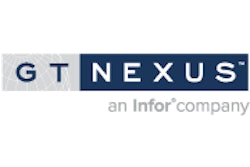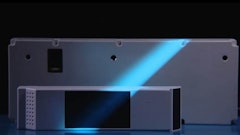
In today’s world where supply chains are churning out vast amounts of data, the reliance on software solutions to process and interpret that input has never been greater. According to Gartner, adoption of supply chain management (SCM) software accelerated significantly in 2017, with total worldwide market revenue growing 13.9 percent to reach a total of $12.2 billion in 2017. The flow of data among supply partners, coupled with Internet of Things (IoT), machine learning and artificial intelligence (AI) technologies, makes implementing the right solution more critical.
Food Logistics reached out to the leading SCM software providers for their insights on this changing landscape. Their responses are as diverse as the markets they serve.
Along with a continued move toward SaaS offerings, BluJay Solutions sees visibility, agility and integration as the leading SCM software trends to watch. SCM software is helping to provide visibility into not only a single shipper’s supply chain, but to supply chains in smaller verticals through data and analytics, says Dan Grimm, senior vice president, global solutions consulting for BluJay Solutions. In addition, notifications of exceptions are now more important.
Log in to view the full article
In today’s world where supply chains are churning out vast amounts of data, the reliance on software solutions to process and interpret that input has never been greater. According to Gartner, adoption of supply chain management (SCM) software accelerated significantly in 2017, with total worldwide market revenue growing 13.9 percent to reach a total of $12.2 billion in 2017. The flow of data among supply partners, coupled with Internet of Things (IoT), machine learning and artificial intelligence (AI) technologies, makes implementing the right solution more critical.
Food Logistics reached out to the leading SCM software providers for their insights on this changing landscape. Their responses are as diverse as the markets they serve.
BluJay Solutions
Along with a continued move toward SaaS offerings, BluJay Solutions sees visibility, agility and integration as the leading SCM software trends to watch. SCM software is helping to provide visibility into not only a single shipper’s supply chain, but to supply chains in smaller verticals through data and analytics, says Dan Grimm, senior vice president, global solutions consulting for BluJay Solutions. In addition, notifications of exceptions are now more important.
“The ability to react to operational challenges faster and more effectively also is increasingly important in supply chain, making flexible, nimble technology a must,” says Bill Madden, vice president, logistics as a service for BluJay. “Furthermore, SCM software integration with external systems is becoming more API-driven. This means shippers are getting more real-time information fed from and to WMS, YMS, ERPs and mobility solutions in order to more proactively manage their supply chains.”
BluJay is also seeing a focus on the overall expansion of breadth of technologies offered on a single platform or from a single organization. Grimm says an emphasis on the entire supply chain becomes stronger by the year, and with rapid market change, there’s pressure to offer solutions in multiple areas of supply chain execution, rather than being a leader in only a particular area.
“These technologies need to be integrated and provide expansive data solutions,” says Madden.
Infor GT Nexus Commerce Network
Now that more companies have become comfortable with the cloud, Infor is seeing real progress in innovations such as machine learning, AI, blockchain and IoT.
“What were buzzwords a few years ago, are now powering the next wave of automation and supply chain orchestration, further turning the massive amount of data about the supply chain into insights businesses can dynamically act upon to ensure the continuous flow of goods from source to store,” says Matt Gunn, senior manager of industry marketing at Infor.
In the coming months, he expects to see more software that’s intuitively designed, user-friendly, and that leverages underlying technologies like machine learning and AI to give businesses enhanced visibility and more control over their supply chains. Within the food and beverage industry specifically, blockchain, machine learning and IoT have the potential to enhance visibility and traceability in the supply chain, but also help reduce waste, increase sustainability and help identify ways to improve on the industry’s historically tight margins.
“Because of its distributed infrastructure and immutable record keeping, blockchain remains one of the more promising technologies for authenticating transactions and tracing goods. However, until blockchain technology proves itself as a viable option at scale, businesses should continue to invest in technologies that help connect across multiple enterprises to enhance visibility and collaboration, while also providing more control over the real-time movement of goods,” Gunn adds.
JAGGAER
The promised digital conversion strategies advertised by many companies are becoming a reality. What this means is that a vision now has to be operationalized: Suddenly the rubber is hitting the road, says Zia Zahiri, chief technology officer for JAGGAER.
“Every wake-up call has a starting point, and with most companies, this means prioritizing by applying the strategy to the business considerations that are in highest demand, greatest circulation and have the most immediate impact,” says Zahiri. “Conversion begins with digitizing transactional documents (e.g., purchase order, advance shipping notice, invoice, receivables, payments and the like) into records.”
Companies have struggled to manage their data for years, but there’s finally an approach to cleaning house. Analytic-driven features and guided procurement are being enabled through data cleansing software tools and enrichments (e.g., risk analysis, financial auditability and compliance), says Zahiri. There is also demand for overall spend management process optimization (direct and indirect), supplier visibility and shared practices, including more collaboration using integrated software solutions.
What will have the most profound and immediate impact on SCM software? Zahiri says it can be found in the unsheathed sabers of politicians. Tariff wars have placed a sudden constraint on the supplier network and the distribution chain. And this affects revenues, necessitating finding both new sources and distribution revenue streams.
“Look at Harley-Davidson—its solution to a tariff crimp in the supply chain was radical: Move the chain.” says Zahiri. “What does this mean? New sourcing in new countries and a potentially expended distribution network as production is cranked up in what might have been a secondary market. Necessity is a catalyst for innovation; it will be interesting to see what new needs are communicated to software companies as demands change to cope with this political and economic turbulence.”
JDA Software
Companies, most importantly, manufacturers are taking the lead in the digitalization of supply chain more seriously due to customer centricity. The stringent service-level expectations from retailers, shrinking order lead times and precise delivery windows are redefining the context of supply chain efficiency, says Srini Muthusrinivasan, senior director, global industry strategy for JDA Software.
“JDA sees the top three SCM innovations for the food and beverage industries as demand sensing, with true handle on both short-term and long-term demand; control towers, a platform that allows for real-time inventory and logistics visibility with actionable risk-management workflows; and food quality, leveraging blockchain and data analytics for tracking and traceability of inventory in the end-to-end, farm-to-fork supply chain,” says Muthusrinivasan.
“The ability to ingest IoT data with actionable response levers, as well as hand-offs or autonomous supply chain software using AI or machine learning has also become important,” he adds. “This is not just about capturing IoT signals, but being able to respond to market dynamics and disruptions in real time, in the most profitable way.”
Manhattan Associates
As food and beverage companies work to execute shorter delivery times on smaller orders, they are prioritizing omnichannel capabilities across the supply chain. Eric Lamphier, senior director of product management, says he often hears the terms “omnichannel” and “digital transformation” used interchangeably, but both mean that you have full visibility into everything in your network, so you can consistently deliver on your promises to customers.
Lamphier says he sees three major trends continue to emerge from that shift.
Digital freight matching. On the transportation side, the emphasis is largely on the capacity crunch or, specifically, how to get inventory where it needs to go with less available carriers and drivers.
“To get around this shortage, companies must create entirely new pathways to ship freight,” says Lamphier. “Digital freight matching enables shippers to locate and contract alternative local carriers to transport shipments without compromising security or service.”
Automation. Companies will continue to invest heavily in warehouse automation and robotics as it becomes more difficult to secure cost-effective talent.
“This is especially true in distribution-centric areas during the holiday peak season,” Lamphier says. “Shippers are also placing a high priority on software solutions that can orchestrate workflows across man and machine assets.”
Mobility. More warehouse managers are looking to equip workers with intuitive, touchscreen and mobile tools as they reduce training time and improve efficiency and accuracy. The managers themselves are also prioritizing investments in tools that help them understand the status of the operation while at their desks or on the go.
“Information and metric-rich software user interfaces, including data visualizations and touch controls, empower managers to confidently monitor and take corrective actions at any time throughout the day, regardless of their location,” says Lamphier. “These advanced tools for managers also improve interactions with associates to increase employee engagement and job satisfaction.”
Food and beverage customers are seeking modern, holistic and connected omnichannel solutions that encompass network-wide inventory tracking and order fulfillment workflows, says Lamphier.
“E-commerce order fulfillment, home delivery, and buy online pickup in store (BOPIS) demand that all systems are interconnected, including order management, warehouse management, transportation management, and retail store systems, including point of sale (POS),” he says. “In the end, it’s all about rapidly delivering a great experience based on the promises made to the customer.”
Oracle
As the movement of enterprise SCM apps to the cloud accelerates, Jon Chorley, chief sustainability officer and group vice president, SCM product strategy and PLM at Oracle, says IoT and AI will increasingly become more mainstream and link directly to SCM functionality.
“Predictive analytics leveraging big data from IoT, web and other sources are helping improve a broad set of SCM processes, from NPD/NPI to maintenance. Additionally, blockchain is now being used as a method to store and share data across a distributed and multi-enterprise network,” he says.
Chorley adds that advances in augmented reality, combined with digital twin technology, are also seeing great strides in the SCM space, creating an innovative user experience (as well as an improved employee training experience) that integrates the real world with a broad set of contextual information—all within the natural field of view.
With new technology, however, comes new expectations from customers. “Customers now want improved insights that enable better tracking and tracing for their orders, which can of course, be supported and improved via blockchain,” Chorley notes. “Additionally, customers are keen on receiving improved access to sales information, all in real time, putting them two steps ahead of their competitors.”
SAP Ariba
In the food and beverage industry, SAP Ariba anticipates more change in the next five years than it has seen in the last 50, meaning companies will need supply chain software that can keep up. Leah Knight, senior marketing director, supply chain/direct spend solutions marketing for SAP Ariba, says aging demographics are also driving a need for rapid and coordinated new product design and introduction. And increasing consumer interest in sustainability, environmental impacts and corporate social responsibility is pushing innovation to differentiate in these areas.
SAP Ariba specifically points to three major areas of innovation, which include IoT sensors integrated with predictive analytics and collaborative replenishment technologies to predict shortages before they happen, quality collaboration technologies and multi-tiered supply chain collaboration.
“While collaborating with suppliers on supply chain planning and execution has been a trend across industries for a while, new IoT technologies have become a disruptive force,” says Knight. “Supplier collaboration has also evolved to include quality and other next-gen processes that aren’t supported in first-generation technologies like EDI.
“New collaboration technology lets brand owners and their suppliers share quality information as well as end products across contract manufacturers, copackers and raw materials suppliers. And this helps them equip their quality managers with better visibility into the quality of supply,” she adds.




















